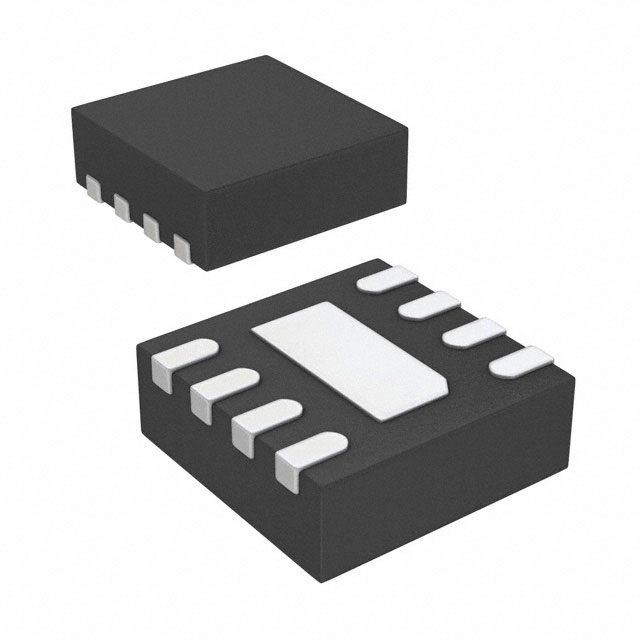Xem thông số kỹ thuật để biết chi tiết sản phẩm.

LTC2960IDC-3#TRPBF
Product Overview
Category
LTC2960IDC-3#TRPBF belongs to the category of integrated circuits (ICs).
Use
This product is commonly used in electronic devices for voltage monitoring and power supply sequencing applications.
Characteristics
- Voltage monitoring: The LTC2960IDC-3#TRPBF provides accurate monitoring of input voltages.
- Power supply sequencing: It ensures proper sequencing of multiple power supplies.
- Low power consumption: This IC operates with low power consumption, making it suitable for battery-powered devices.
- High accuracy: The LTC2960IDC-3#TRPBF offers high accuracy in voltage monitoring and sequencing.
Package
The LTC2960IDC-3#TRPBF comes in a small outline package (SOIC) with 8 pins.
Essence
The essence of this product lies in its ability to monitor and sequence voltages accurately, ensuring stable and reliable operation of electronic devices.
Packaging/Quantity
The LTC2960IDC-3#TRPBF is typically packaged in reels or tubes, with a quantity of 2500 units per reel/tube.
Specifications
- Input Voltage Range: 2.7V to 80V
- Threshold Accuracy: ±1.5%
- Quiescent Current: 10μA
- Operating Temperature Range: -40°C to +85°C
- Output Type: Active-Low Open-Drain
- Fault Detection Timeout: Adjustable
Detailed Pin Configuration
- VIN: Input voltage pin
- GND: Ground pin
- FLT: Fault output pin
- EN: Enable pin
- OV: Overvoltage threshold pin
- UV: Undervoltage threshold pin
- OVSET: Overvoltage threshold set pin
- UVSET: Undervoltage threshold set pin
Functional Features
- Voltage Monitoring: The LTC2960IDC-3#TRPBF continuously monitors the input voltage and provides a fault output when it exceeds or falls below the programmed thresholds.
- Power Supply Sequencing: It ensures proper sequencing of multiple power supplies, preventing potential damage to sensitive components.
- Adjustable Thresholds: The overvoltage and undervoltage thresholds can be adjusted according to specific application requirements.
- Fault Detection Timeout: The IC includes an adjustable timeout feature that allows for detection of prolonged faults.
Advantages and Disadvantages
Advantages
- Accurate voltage monitoring and sequencing
- Low power consumption
- Wide input voltage range
- Adjustable thresholds for customization
- Compact package size
Disadvantages
- Limited fault detection timeout range
- Requires additional external components for complete functionality
Working Principles
The LTC2960IDC-3#TRPBF operates by comparing the input voltage with the programmed thresholds. When the voltage exceeds the overvoltage threshold or falls below the undervoltage threshold, the fault output is triggered. The enable pin controls the operation of the IC, allowing for easy integration into various systems.
Detailed Application Field Plans
The LTC2960IDC-3#TRPBF finds applications in various fields, including: 1. Power supply units: It ensures stable voltage levels and proper sequencing in power supply units, preventing damage to connected devices. 2. Battery-powered devices: The low power consumption makes it suitable for battery-powered devices, extending battery life. 3. Industrial automation: It can be used in industrial automation systems to monitor and control voltage levels in critical equipment. 4. Automotive electronics: The IC can be employed in automotive electronics to monitor and protect sensitive components from voltage fluctuations.
Detailed and Complete Alternative Models
- LTC2960IDC-2#TRPBF: Similar to LTC2960IDC-3#TRPBF, but with a different undervoltage threshold.
- LTC2960IDC-4#TRPBF: Similar to LTC2960IDC-3#TRPBF, but with a different overvoltage threshold.
- LTC2960IDC-5#TRPBF: Similar to LTC2960IDC-3#TRPBF, but with adjustable fault detection timeout.
These alternative models provide flexibility in selecting the appropriate voltage monitoring and sequencing IC based on specific application requirements.
Word count: 524 words
Liệt kê 10 câu hỏi và câu trả lời thường gặp liên quan đến ứng dụng LTC2960IDC-3#TRPBF trong giải pháp kỹ thuật
Sure! Here are 10 common questions and answers related to the application of LTC2960IDC-3#TRPBF in technical solutions:
Q: What is LTC2960IDC-3#TRPBF? A: LTC2960IDC-3#TRPBF is a specific model of a voltage monitor and supervisor IC manufactured by Linear Technology (now part of Analog Devices). It is designed to monitor power supply voltages and provide various protection features.
Q: What are the key features of LTC2960IDC-3#TRPBF? A: Some key features of LTC2960IDC-3#TRPBF include undervoltage and overvoltage monitoring, adjustable threshold levels, programmable delay times, and fault detection outputs.
Q: How can LTC2960IDC-3#TRPBF be used in technical solutions? A: LTC2960IDC-3#TRPBF can be used in various applications where voltage monitoring and protection are required, such as power supplies, battery management systems, industrial control systems, and automotive electronics.
Q: What is the operating voltage range of LTC2960IDC-3#TRPBF? A: The operating voltage range of LTC2960IDC-3#TRPBF is typically between 2.7V and 80V.
Q: Can LTC2960IDC-3#TRPBF handle multiple power supply inputs? A: Yes, LTC2960IDC-3#TRPBF has multiple input pins that can be used to monitor different power supply inputs simultaneously.
Q: Does LTC2960IDC-3#TRPBF have built-in protection features? A: Yes, LTC2960IDC-3#TRPBF provides various protection features like overvoltage lockout, undervoltage lockout, and fault detection outputs to ensure safe operation of the system.
Q: How can I adjust the threshold levels of LTC2960IDC-3#TRPBF? A: The threshold levels of LTC2960IDC-3#TRPBF can be adjusted using external resistors connected to the appropriate pins of the IC.
Q: Can LTC2960IDC-3#TRPBF generate an interrupt signal upon detecting a fault condition? A: Yes, LTC2960IDC-3#TRPBF has an open-drain output pin that can be configured to generate an interrupt signal when a fault condition is detected.
Q: Is LTC2960IDC-3#TRPBF suitable for automotive applications? A: Yes, LTC2960IDC-3#TRPBF is designed to meet the requirements of automotive applications and is qualified for automotive-grade reliability standards.
Q: Where can I find more information about LTC2960IDC-3#TRPBF? A: You can find detailed information about LTC2960IDC-3#TRPBF in the datasheet provided by Analog Devices. It contains specifications, application notes, and example circuits to help you understand its usage in technical solutions.
Please note that the answers provided here are general and may vary depending on the specific requirements and use cases. It's always recommended to refer to the official documentation and consult with technical experts for accurate information.

